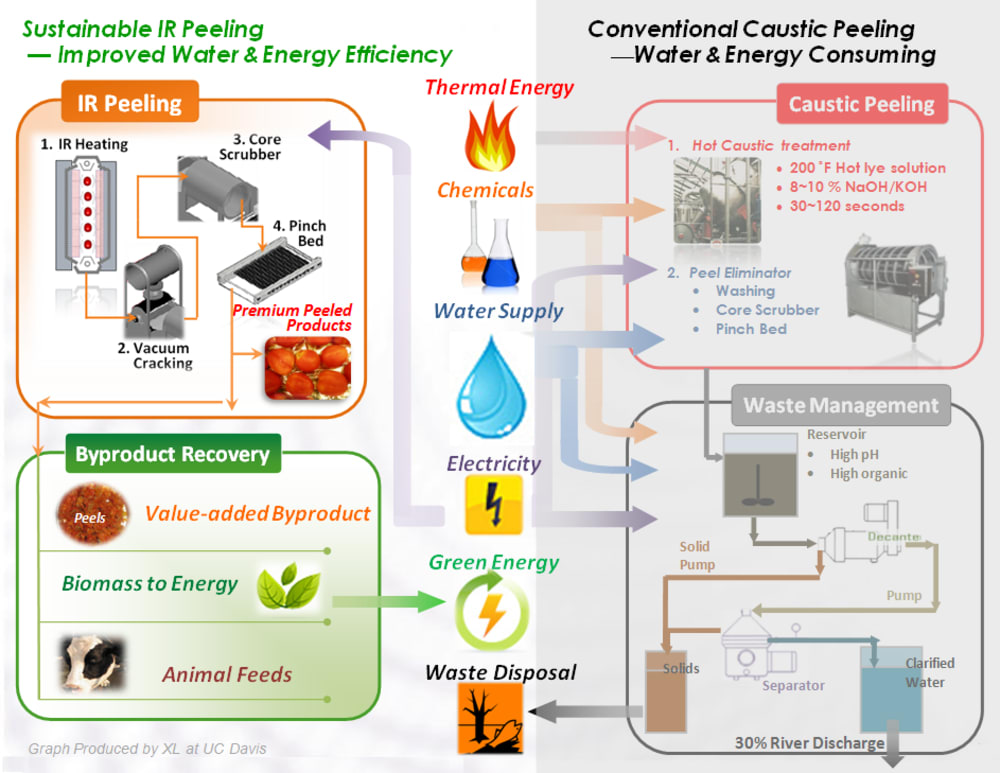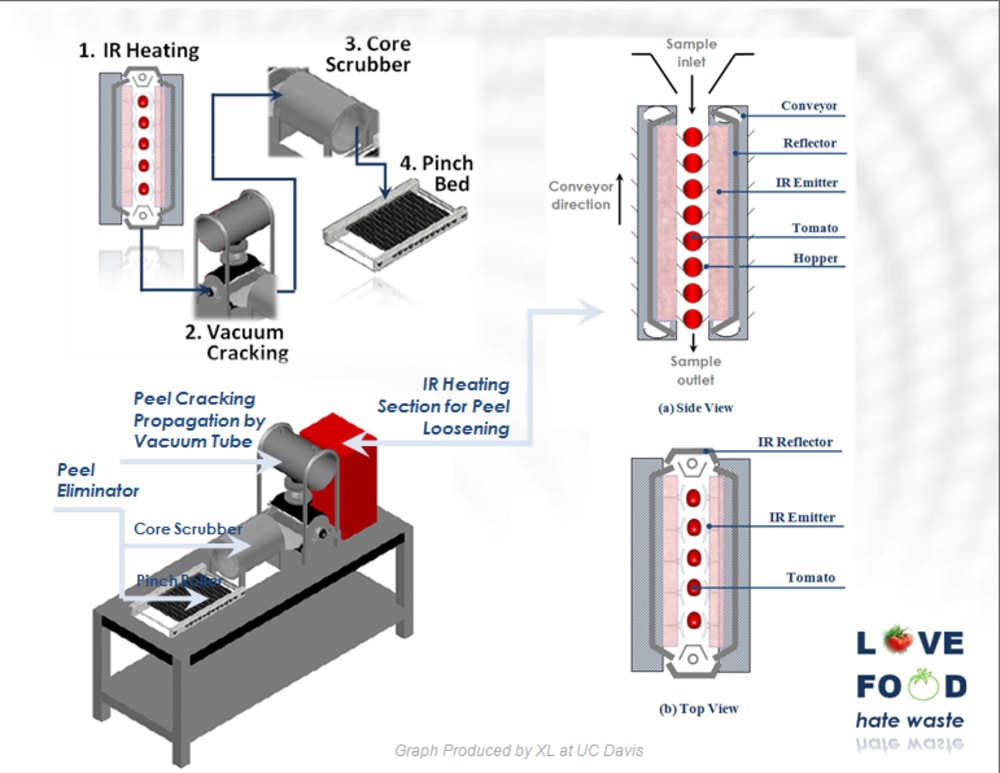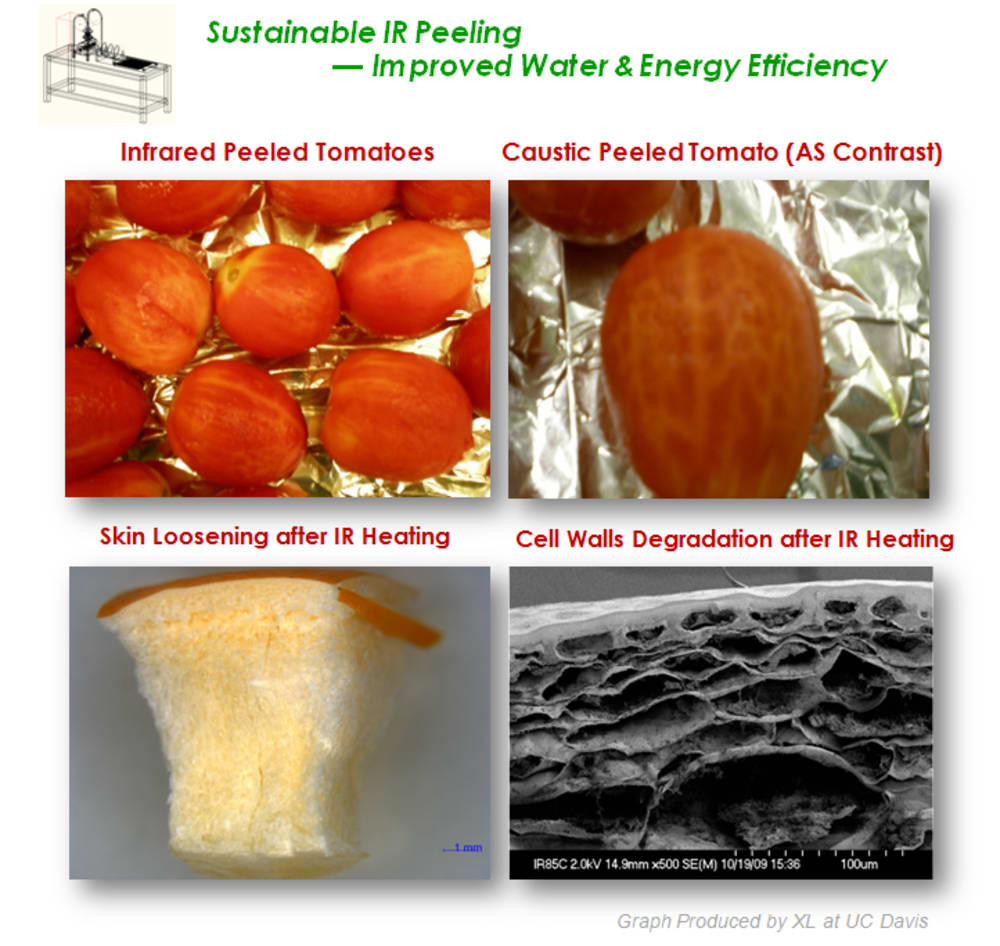
The current tomato peeling process is a water- and energy- intensive operation and results in a large amount of wastewater. Particularly, the wastewater from caustic peeling method using hot lye solution is high in salinity and organic load due to loss of tomato solid during peeling. It is reported that the water consumption for tomato processing in California alone is about 10.7 billion gallons per year, while expenses of wastewater management could be up to $8,000 per ton of total dissolved solids. Presently, tomato processors are under intense regulation and environmental pressure and are seeking alternatives to replace caustic peeling. The development of sustainable tomato peeling technology has recently been identified as an urgent and a top priority by the Energy Efficiency Roadmap for the California Food Industry. To address the critical challenges in the food industry, we designed and are developing a novel and sustainable peeling method which uses infrared (IR) heat without water.
The advantages of IR heating are its high efficiency of surface heating and fast heat delivery without water. Since the typical IR penetration depth for fruit products is shallow (<1 mm) and controllable, only tomato skins would be heated, which is ideal for maintaining firm and high quality peeled tomatoes. In addition, because the resulting peels do not contain any added chemicals, they can be cost-effectively utilized as value-added food products. Our studies have demonstrated that IR dry-peeling had significantly reduced tomato peeling loss and improved produce quality. The objective of this project is to develop a sustainable dry-peeling technology based on IR heating. Current research has gained great support from the California Energy Commission and the California League of Food Processors. A project advisory board including representatives from more than a dozen tomato processing companies and equipment manufacturers has formed to accelerate the development and commercialization of the new sustainable peeling technology.
To develop the new peeling technology both mathematical modeling and experimental methods will be used. The three-dimensional heat and mass transfer models based on the tomato geometric characteristics and IR radiation principles will be developed and solved using COSMOL software. The optimized processing conditions, including IR intensity and heating time, will be determined. Based on the optimized processing conditions and configurations, we will develop an automatic, continuous IR dry-peeling system, consisting of feeding, IR heating, peel eliminator and discharge sections, which will be used for demonstration of the new peeling technology. Lined-up tomatoes feed through a parallel set of IR emitters designed in curved shape to achieve maximum surface heating. Combined with a vacuum system to create cracking and release loosened skins, the set of mechanical peel eliminator promises an effective final skin-removal by using peel scrubber and pitchers.
It is anticipated that when the new IR dry-peeling technology is fully developed and implemented, it will bring numerous benefits to the food industry and our society, including huge savings in water and water-related energy consumption, higher quality products and value-added by-product recovery, and reduced environmental pollution. The sustainable peeling technology will also be extended to other fruits and vegetables which could revolutionize the industry.
-
Awards
-
 2010 Top 10 Most Popular
2010 Top 10 Most Popular
Like this entry?
-
About the Entrant
- Name:Xuan Li
- Type of entry:teamTeam members:Xuan Li
Zhongli Pan
Griffiths G. Atungulu - Software used for this entry:AutoCAD
- Patent status:none








